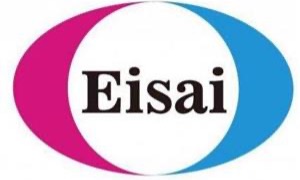EU approves first Alzheimer’s drug
April 23, 2025
Source: drugdu
 149
149

Recently, Biogen and Eisai jointly announced that the European Commission has officially approved their anti-amyloid β antibody drug Lecanemab for marketing for the treatment of mild cognitive impairment and mild dementia caused by Alzheimer's disease (AD) in adult patients. This indication is limited to apolipoprotein Eε4 (ApoEε4) non-carriers or heterozygotes, and patients must be diagnosed with evidence of amyloid pathology.
Back in July 2024, the European Medicines Agency gave a "not recommended" opinion on Lecanemab's marketing application due to its benefit-risk ratio. After the research and development team supplemented additional data and the regulatory agency re-evaluated it, the drug was finally approved and became the first therapeutic drug in the EU for the potential cause of Alzheimer's disease.
The road to counterattack
Lecanemab is a humanized immunoglobulin G1 (IgG1) monoclonal antibody that can selectively neutralize and remove soluble toxic Aβ aggregates that cause AD neuropathy, thereby positively affecting the AD pathological process and slowing the progression of the disease. In March 2014, Biogen and Eisai reached an agreement to obtain the rights to jointly develop and commercialize the drug.
In January 2023, the U.S. FDA approved the marketing of Lencanelomab under the accelerated approval pathway based on the data from the Phase 2b proof-of-concept trial. The indication is patients with mild cognitive impairment or mild dementia caused by Alzheimer's disease with pathologically confirmed amyloid beta deposition. Six months later, with the release of positive results from the confirmatory Phase 3 Clarity AD study, the drug was fully approved by the FDA; in January 2024, China also approved its marketing application.
In the Clarity-AD study, although the clinical trial achieved the primary endpoint, after 18 months of treatment with lencanezumab, the CDR-SB score only improved by 0.45 points compared with the placebo group, and the difference in efficacy was small. For the 18-point CDR-SB scale, it failed to fully demonstrate a significant clinical effect. In terms of safety, the incidence of amyloid-related imaging abnormalities (ARIA) in the lencanezumab treatment group was 21.7%. Although most of them were mild and asymptomatic, 5 of the 898 patients still developed cerebral hemorrhages larger than 1 cm.
Such results have sparked controversy over their "clinical significance": although lencanezumab achieved pathological reversal by clearing beta-amyloid plaques, its improvement in cognitive function was limited to statistical significance rather than a major breakthrough in clinical terms.
In July 2024, the European Medicines Agency made a negative decision on its marketing application based on a benefit-risk ratio assessment, on the grounds that "the clinical benefit of delaying cognitive decline is not sufficient to offset the risk of cerebral edema/hemorrhage."
In the face of EMA's rejection, Eisai/Biogen supplemented relevant data based on the Clarity AD trial. On the one hand, subgroup analysis was used to confirm the efficacy advantage of ApoEε4 non-carriers/heterozygotes; on the other hand, long-term safety data were submitted. In November 2024, the EMA Committee for Medicinal Products for Human Use (CHMP) reversed its previous position based on the above additional information and recommended approval.
The official approval of lencanezumab in the EU was based on data from the improved Clarity AD study. In this trial, lencanezumab met the primary endpoint and all key secondary endpoints with statistically significant results.
In this global Phase 3 trial involving 1,795 early AD patients (including 1,521 in the EU indication population), the treatment group received 10 mg/kg of lencanezumab every two weeks. After 18 months of treatment, the CDR-SB score of the EU indication population decreased by 31% compared with the placebo group, and the secondary endpoint ADCS MCI-ADL scale score decreased by 33%, confirming its protective effect on patients' daily living ability. Common adverse reactions included infusion-related reactions (26%), ARIA-H (13%), headache (11%) and ARIA-E (9%).
In the commercialization process, the data released by Eisai showed the strong market performance of Lencanicumab. In the first three quarters of 2024, Lencanicumab achieved a revenue of approximately 29.6 billion yen (approximately US$194 million), a year-on-year increase of approximately 2084%. This year-on-year growth rate of over 2000% sends a strong signal, indicating that this new drug for the treatment of Alzheimer's disease has a very promising market prospect.
As a drug targeting amyloid beta, in March 2025, Eli Lilly's application for marketing approval of Donanemab for the treatment of AD was formally rejected by the EMA on the grounds that the drug's ability to slow cognitive decline was not sufficient to offset the risk of severe brain swelling in patients.
According to the EMA assessment, the most critical safety risk in the study of donezumab is the frequent occurrence of amyloid-associated imaging abnormalities (ARIA) in the trial group. Data showed that the overall incidence of ARIA in the trial group was 36.8%, much higher than the 14.9% in the placebo group, and included 3 fatal cases. Further analysis of the low-risk subgroup (people who do not carry the ApoE4 gene) found that the incidence of ARIA in the trial group was still 24.7%, and there were 0.8% severe ARIA events (including 1 death).
In terms of efficacy, the overall iADRs score showed that the degree of disease progression in the trial group was 10 points, while that in the placebo group was 13 points; in the non-ApoE4 carrier subgroup, the deterioration scores of the two groups were 14 points and 16 points, respectively. However, there is currently a lack of evidence to support long-term efficacy in patients who are not ApoE4 gene carriers.
Although donanemab can slow cognitive decline by 35%, this effect does not reach the threshold of "clinical significance". EMA believes that the limited efficacy benefits of donanemab are still not enough to offset its risk of causing fatal ARIA.
The European Medicines Agency has given Eli Lilly's Alzheimer's drug Donanemab a red light for the same reasons as when it rejected Lecanemab, both focusing on serious safety issues. Among them, the risk of amyloid-related imaging abnormalities is a problem that these two Aβ monoclonal antibody drugs must solve.
During the communication with EMA, the supplementary analysis provided by Eisai/Biogen showed that among patients with only 1 or no APOE4 copies, the rate of cerebral edema was 9% and the rate of cerebral hemorrhage was 13%; in the initial analysis of the entire population, these two figures were 12.6% and 16.9%, respectively. Based on this, EMA determined that for early AD patients with only 1 or no ApoE4 copies, lencanezumab has more benefits than disadvantages. This is the key reason why the Committee for Medicinal Products for Human Use (CHMP) changed its mind 4 months later and agreed to grant marketing authorization for lencanezumab.
Eli Lilly's Donanemab and Eisai/Biogen's Lecanemab had previously been approved for marketing by the U.S. FDA, but failed at the EMA, which indirectly illustrates the obvious differences in regulatory logic between Europe and the United States.
The FDA focuses on unmet clinical needs and is willing to accept smaller efficacy benefits (such as recognizing a difference of 0.45 points in the CDR-SB score), while the EMA emphasizes the balance between efficacy and risk, requiring that drugs must have clear clinical benefits and have a lower tolerance for serious side effects such as ARIA. This difference is more obvious in the approval of Donezetimibe - although it has shown some efficacy in the non-ApoE4 carrier subgroup, the lack of long-term data and higher safety risks ultimately led to the EMA's continued rejection.
The development of drugs for Alzheimer's disease is difficult and time-consuming, and patients have an urgent need for treatment. In order to promote the development and approval of drugs for the disease, the industry calls for the reform of regulatory policies, hoping to learn from the FDA's "breakthrough therapy" channel to accelerate the approval process and help more potential drugs to be launched on the market as soon as possible while ensuring a certain degree of safety.
In the field of Alzheimer's disease treatment, Europe finally welcomed its first drug. In the future, regulatory agencies, pharmaceutical companies, etc. need to work together to rely on technological innovation and policy optimization to allow more AD drugs to be launched, solve the problem of "R&D black hole", and add hope to patients around the world.
https://news.yaozh.com/archive/45333.html
By editorRead more on
- CoreMedik Unlocks Dual Certifications for Implantation & Intervention of Artificial Heart December 25, 2025
- First in over 70 years! New drug for schizophrenia approved in China December 25, 2025
- Is the “anti-aging drug” a scientific breakthrough or a capital game? December 25, 2025
- Wegovy oral tablets receive FDA approval, ushering in the “dual-dosage era” for GLP-1 weight-loss drugs December 25, 2025
- The leading medical device company’s new venture is aiming for an IPO! December 25, 2025
your submission has already been received.
OK
Subscribe
Please enter a valid Email address!
Submit
The most relevant industry news & insight will be sent to you every two weeks.



